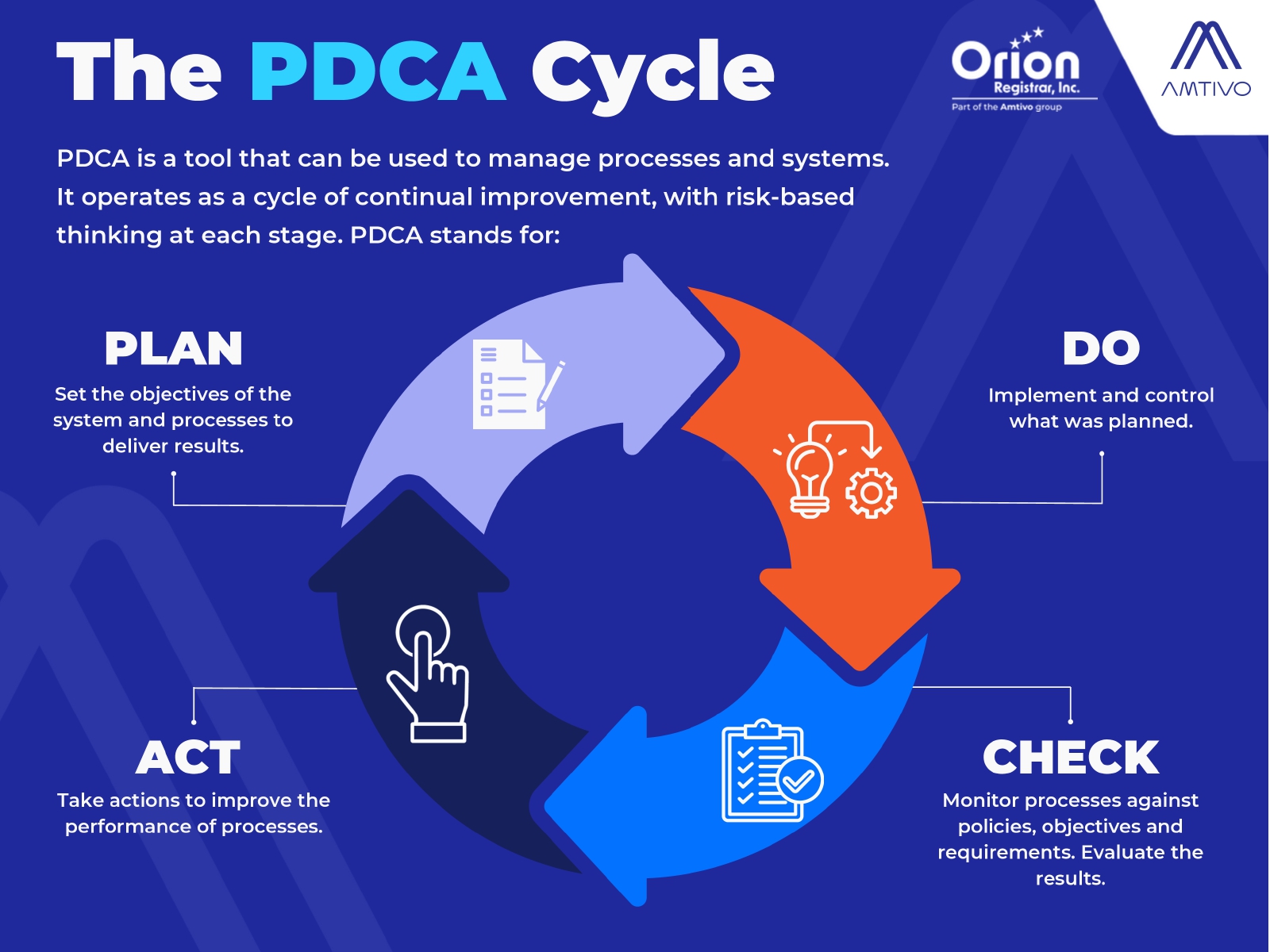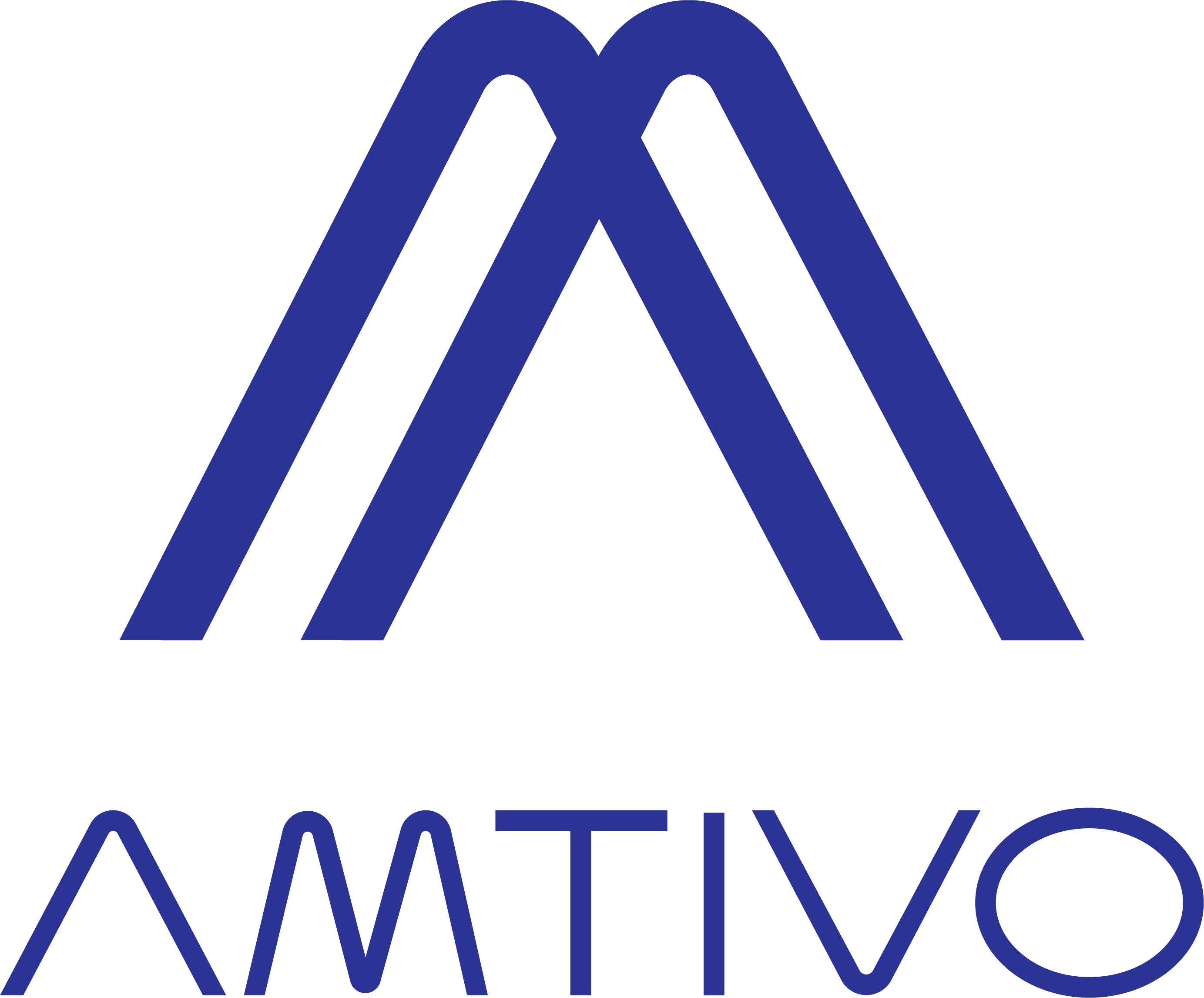The Plan, Do, Check, Act (PDCA) cycle is a critical method in quality management and continual improvement.
The cycle was first invented in the 1920s by physicist Walter Shewhart before being adjusted and popularized in the 1950s by Dr. W. Edwards Deming, one of the pioneers of quality management.
It begins with planning actions to achieve an objective before executing the plan, assessing the results and making necessary adjustments. Deming highlighted that the PDCA cycle is essential for continual learning and improvement, which has led to its widespread adoption in quality management.
This cycle is central to several ISO-Management System Standards that define requirements around each of the PDCA phases.
What Is the Plan, Do, Check, Act Cycle?
The Plan, Do, Check, Act (PDCA) cycle is a four-phase iterative approach. It repeats a cycle of operations to achieve a desired goal or outcome.
The PDCA cycle is inherently iterative, with each cycle building on the results of the previous one, driving ongoing improvement.
It’s a straightforward but powerful tool that provides a systematic approach to problem-solving and overall improvement.
Here’s how it works:
Plan
In the planning phase, areas requiring improvement—whether major changes or minor adjustments—are identified and the objectives are defined. This stage is essential as it helps set the direction and provides a roadmap for the rest of the cycle.
Key activities in the planning stage include:
- Setting objectives—Define your aims for the PDCA cycle, aligning them with your organization’s overall goals
- Defining processes—Determine which processes are required to meet these objectives
- Identifying resources—Establish what resources are needed for success. These resources might be personnel, technology, information or funding
Do
This phase is crucial because it lets you see the plan in action and collect the performance data needed for the following stages. Actions in this stage include:
- Implementing the plan—Carry out the previously defined processes, ideally on a small scale first, to test their effectiveness
- Training—Ensure all relevant staff involved understand the processes and their roles and responsibilities
- Data collection—Collect data that will be used to check the process against the objectives and measure effectiveness
Check
In the Check phase, data is thoroughly analyzed to understand deviations from the plan, assessing whether changes have led to improvements or if further adjustments are needed. Key activities in this phase include:
- Monitoring processes—Track the progress of the implemented processes to ensure they are working as planned
- Evaluating results—Compare the results against the objectives to see if the desired outcomes are achieved
Act
The Act phase involves implementing corrective actions and standardizing successful processes, ensuring that improvements are incorporated into regular operations. Key activities in this phase include:
- Taking corrective actions—Address any problems identified in the Check phase to achieve the objectives
- Making improvements—Use the experience gained and the data collected to improve the processes or the plan for the next cycle

The PDCA Cycle and ISO Standards
The International Organization for Standardization (ISO) is an independent, non-governmental international body that develops and publishes standards. These standards provide frameworks and specifications for technology and business processes, promoting quality, safety and efficiency.
By providing a universally understood and globally respected set of standards, ISO plays a crucial role in enabling international trade and improving business processes in every industry.
The Plan, Do, Check, Act cycle is a fundamental principle in many ISO Management System standards, including ISO 9001, the international standard for Quality Management Systems (QMS). The cycle allows for continual improvement of a QMS, to support the output of consistently high-quality products and services.
In ISO 14001, the Environmental Management System (EMS) standard, the PDCA cycle is used to establish, implement, maintain and continually improve an organization’s environmental impact through an EMS. The Plan stage identifies significant environmental aspects and legal requirements and sets objectives accordingly.
The PDCA cycle also applies to ISO 45001 to ensure the continual improvement of an Occupational Health and Safety Management System. Organizations can identify hazards, perform risk and hazard assessments, and establish processes to deliver results in line with health and safety regulations.
Benefits of the PDCA Framework for an ISO Certification
The Plan, Do, Check, Act (PDCA) cycle offers many benefits that contribute to the success of a management system, helping organizations achieve ISO certification:
- Improves operational efficiency—PDCA encourages regular reviews and process refinement, fostering a culture of ongoing improvement. The PDCA cycle paves the way for streamlined, high-performing operations to become the norm.
- Improves risk management—The Plan phase anticipates and assesses potential risks, while consistent monitoring in the Check phase detects and mitigates them with minimal impact on the organization.
- Enhances customer satisfaction—The cycle nurtures a customer-oriented approach and promotes the delivery of consistent, high-quality products or services. Improved customer experiences could boost your reputation and increase loyalty or win new business.
- Effective change management—PDCA introduces the benefits of process consistency and adaptability, enabling businesses to respond to changing goals or external circumstances. Management systems can remain effective in the face of regulation or organizational change.
- Boosts employee engagement—The PDCA cycle requires involvement from all levels of an organization. This creates a sense of ownership and commitment among employees, which drives further internal improvements.
- Instrumental for achieving ISO certification—As it is embedded within several ISO standards, the PDCA principle helps organizations achieve and maintain their ISO certification and boost their credibility.
By embedding the PDCA cycle into your management systems, organizations can systematically meet ISO requirements, facilitating the certification process and ensuring ongoing compliance through continual improvement.
What to Consider When Implementing the PDCA Cycle
To implement the PDCA cycle effectively, it’s essential to maintain clear communication throughout, be ready to adapt based on insights and keep thorough records for compliance and future audits.
Successful implementation of the PDCA cycle requires strong leadership commitment to allocate resources and foster a culture of continual improvement.
This is what the implementation process might look like for an organization:
Plan
- Conduct a SWOT (Strengths, Weaknesses, Opportunities, Threats) analysis and engage stakeholders to identify areas needing improvement
- Set objectives in line with your organization’s goals and map current workflows to pinpoint bottlenecks
- Audit available resources, identify gaps and consider tangible and intangible assets needed for success
Do
- Implement the plan on a small scale as a pilot test and use project management methods to track progress
- Prepare training sessions and materials to ensure all relevant staff understand their roles, using methods like workshops and elearning
- Define clear metrics and KPIs and use automated tools for systematic data collection
Check
- Conduct regular reviews and use dashboards to monitor the progress of the implemented processes
- Perform gap analysis to compare results against objectives and apply analysis techniques to understand deviations, ensuring the changes meet your organization’s desired outcomes
Act
- Prioritize issues based on their impact and apply change management principles to implement corrective actions
- Document lessons learned and involve the team in brainstorming sessions to develop solutions
- Standardize successful changes and plan for scaling improvements, ensuring all enhancements are documented for consistency
3 Possible Challenges During the PDCA Cycle
- A resistance to change—Clear communication about change and involving all levels of staff is important for successful implementation.
- Gathering accurate data—This can be challenging, so it’s vital to encourage a data-driven culture and invest in effective tools.
- Getting used to gradual improvements—While it could be tempting to skip steps, remember that success typically occurs after a number of cycles and that this tool emphasizes gradual improvements, not overnight success.
How Amtivo (formerly Orion Registrar and American Systems Registrar) can help
If you’re ready to enhance your organization’s processes and implement an ISO management system standard, the Plan, Do, Check, Act can help.
As an ANAB-accredited certification body, we’re authorized to perform certification audits for several management system standards. Our team of expert auditors provides comprehensive certification services for ISO 9001, ISO 14001, ISO 27001, ISO 45001 and training in implementing and auditing an ISMS.
Get a quote today, or contact our team to discuss your needs.





